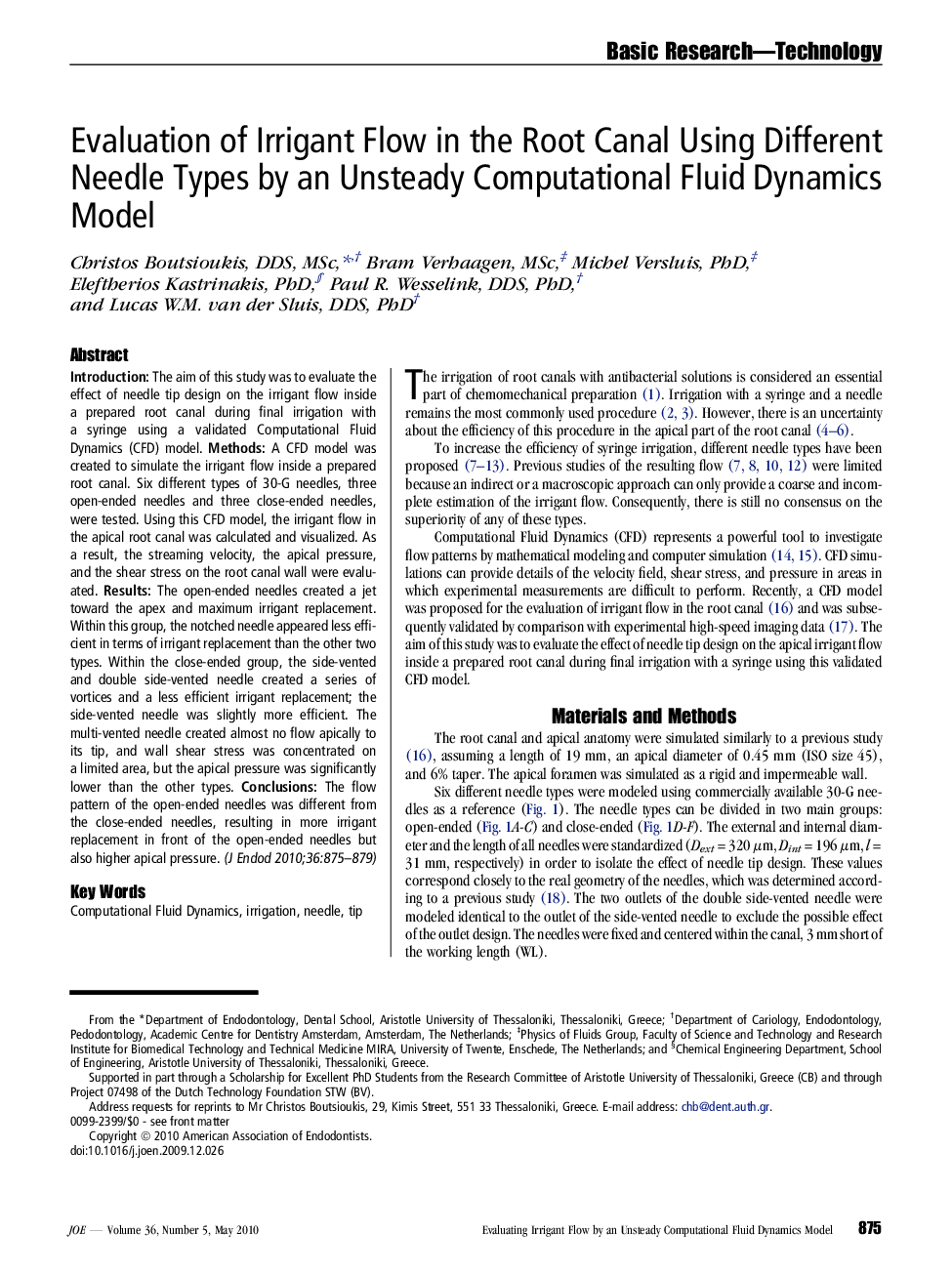| Article ID | Journal | Published Year | Pages | File Type |
|---|---|---|---|---|
| 3147424 | Journal of Endodontics | 2010 | 5 Pages |
IntroductionThe aim of this study was to evaluate the effect of needle tip design on the irrigant flow inside a prepared root canal during final irrigation with a syringe using a validated Computational Fluid Dynamics (CFD) model.MethodsA CFD model was created to simulate the irrigant flow inside a prepared root canal. Six different types of 30-G needles, three open-ended needles and three close-ended needles, were tested. Using this CFD model, the irrigant flow in the apical root canal was calculated and visualized. As a result, the streaming velocity, the apical pressure, and the shear stress on the root canal wall were evaluated.ResultsThe open-ended needles created a jet toward the apex and maximum irrigant replacement. Within this group, the notched needle appeared less efficient in terms of irrigant replacement than the other two types. Within the close-ended group, the side-vented and double side-vented needle created a series of vortices and a less efficient irrigant replacement; the side-vented needle was slightly more efficient. The multi-vented needle created almost no flow apically to its tip, and wall shear stress was concentrated on a limited area, but the apical pressure was significantly lower than the other types.ConclusionsThe flow pattern of the open-ended needles was different from the close-ended needles, resulting in more irrigant replacement in front of the open-ended needles but also higher apical pressure.
